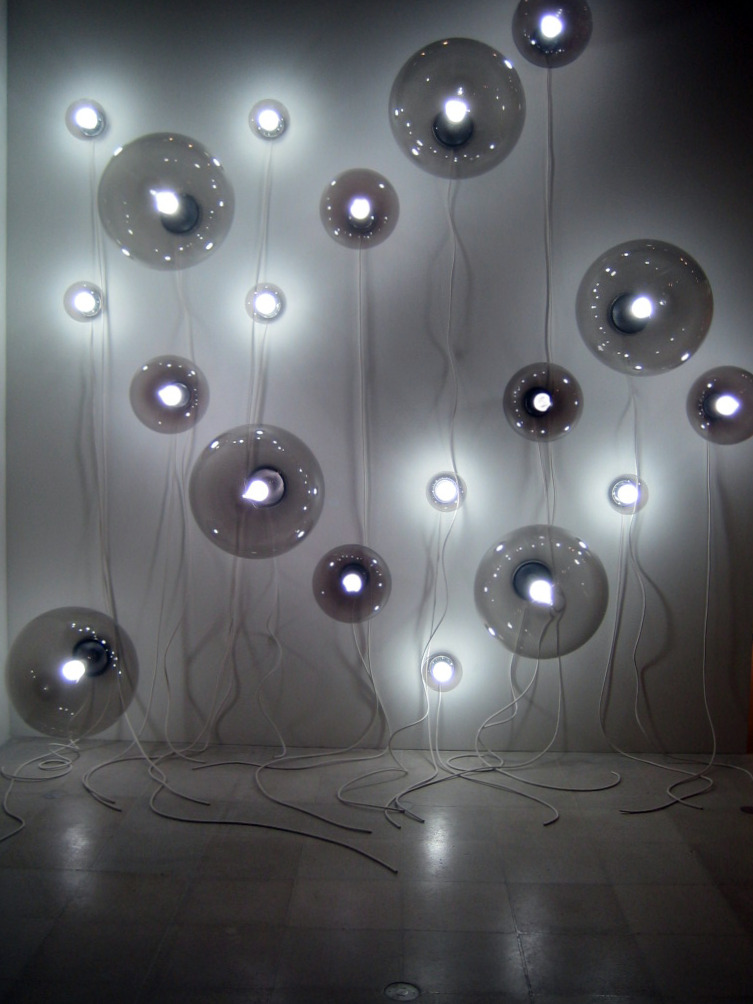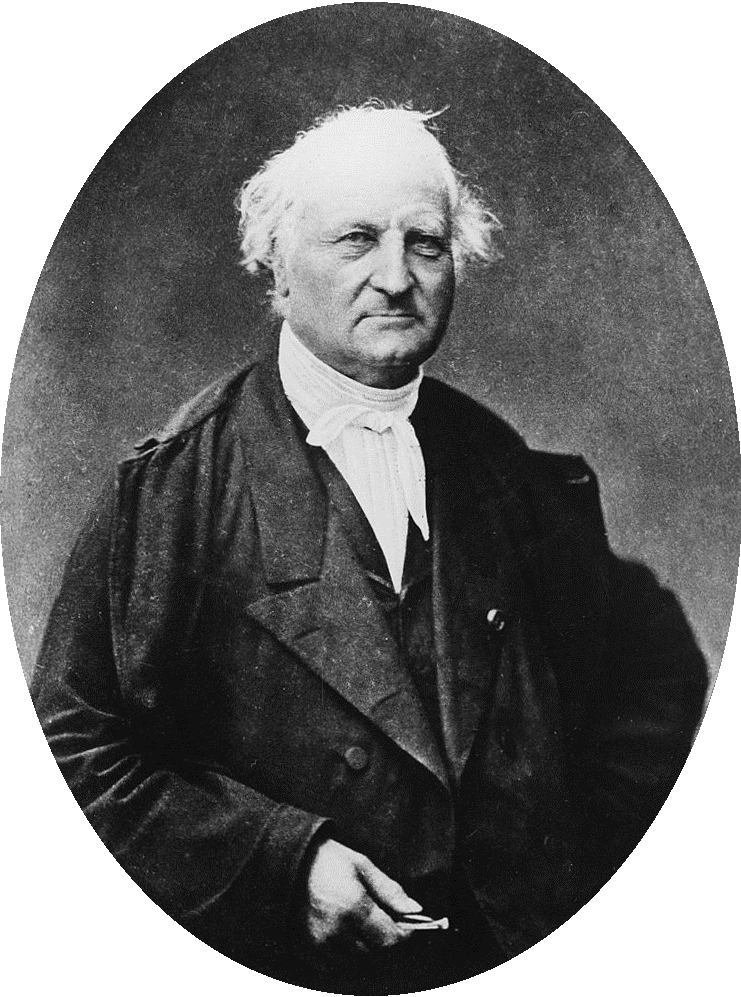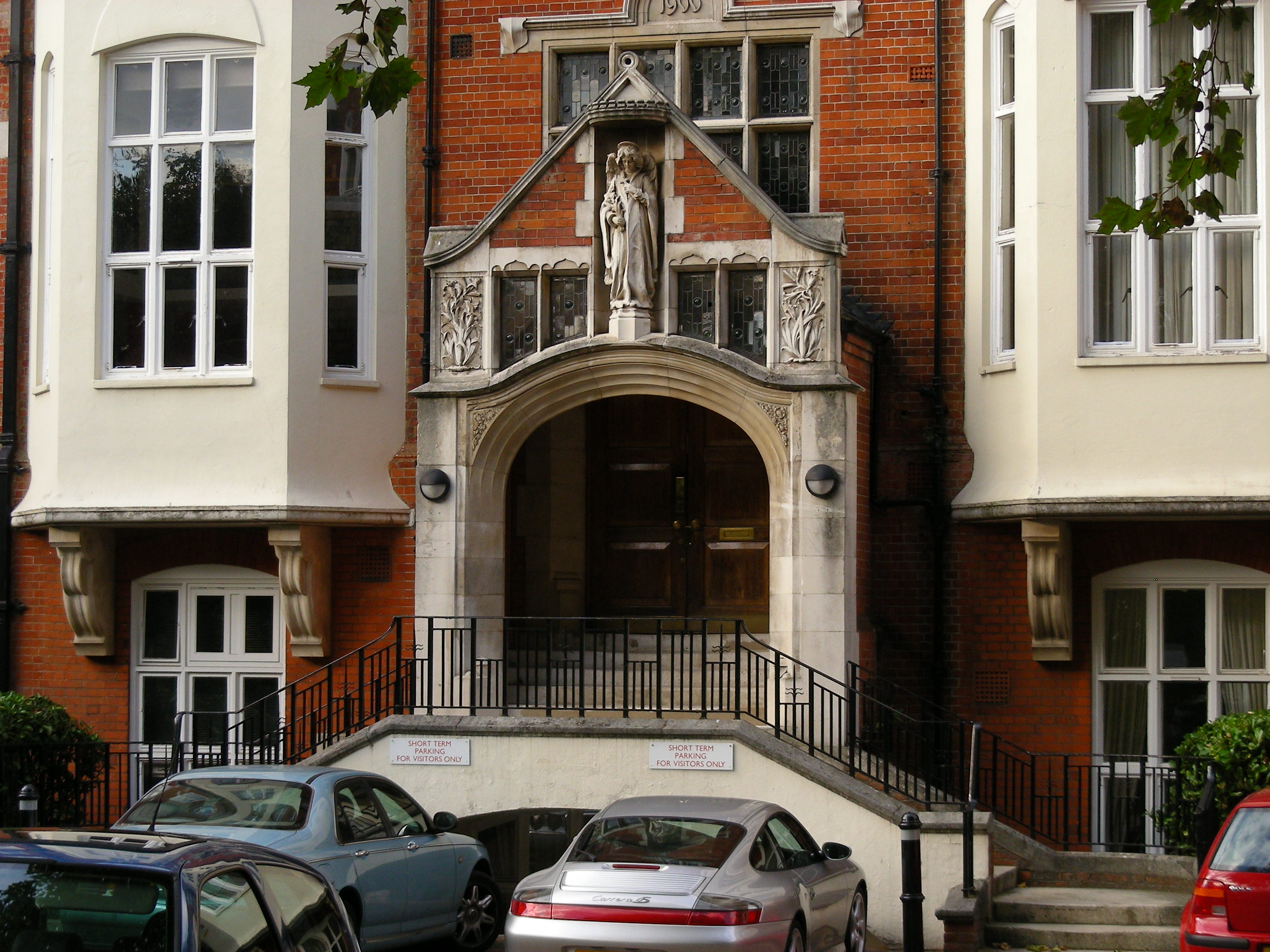|
Hamad Butt
Hamad Masood Butt (9 January 1962 – 25 September 1994) was a British artist of Pakistani heritage who made a series of pioneering works in the early 1990s which sought to bring art into conversation with science, specifically in critical response to the AIDS crisis. Early life and education Butt was born in Lahore, Pakistan in 1962 and moved with his family to East London in 1964. He was the second of five siblings. He was raised in the Muslim faith. As a child he lived in Manor Park and Ilford. He undertook a series of courses in art from 1981 until 1987, including a foundation year at Goldsmiths, University of London and short courses in printmaking and other media at Morley College and Central Saint Martins. He enrolled on the BA Fine Art degree programme at Goldsmiths, University of London from 1987 to 1990. There he was part of a lively cohort of art students including Damien Hirst, Angela Bulloch, Mat Collishaw, Angus Fairhurst, Michael Landy, Gillian Wearing and ... [...More Info...] [...Related Items...] OR: [Wikipedia] [Google] [Baidu] |
Lahore
Lahore ( ; pnb, ; ur, ) is the second most populous city in Pakistan after Karachi and 26th most populous city in the world, with a population of over 13 million. It is the capital of the province of Punjab where it is the largest city. Lahore is one of Pakistan's major industrial and economic hubs, with an estimated GDP ( PPP) of $84 billion as of 2019. It is the largest city as well as the historic capital and cultural centre of the wider Punjab region,Lahore Cantonment globalsecurity.org and is one of Pakistan's most socially liberal, |
Angela Bulloch
Angela Bulloch (born 1966 in Rainy River, Ontario, Canada), is an artist who often works with sound and installation; she is recognised as one of the Young British Artists. Bulloch lives and works in Berlin. Life and career Bulloch studied at Goldsmiths' College, London (1985–1988). She was included in the Freeze (exhibition), Freeze Exhibition in 1988 and was established as one of the Young British Artists. On reflecting on being a Young British Artist, Bulloch said "When I was 22, it was important for me. It was helpful in terms of managing media responses to my work because whenever I mentioned this little label, everyone was like, “Oh yeah, YBA”. But they were just talking about a media generated label, instead of the actual work. It's easier, isn't it? It's for lazy journalists." In 1989 she won the Whitechapel Artists' Award. Bulloch undertook a two-month residency at ARCUS- project in Moriya, Japan in 1994. She was nominated for the Turner Prize in 1997, part of an a ... [...More Info...] [...Related Items...] OR: [Wikipedia] [Google] [Baidu] |
Conservation Of Momentum
In Newtonian mechanics, momentum (more specifically linear momentum or translational momentum) is the product of the mass and velocity of an object. It is a vector quantity, possessing a magnitude and a direction. If is an object's mass and is its velocity (also a vector quantity), then the object's momentum is : \mathbf = m \mathbf. In the International System of Units (SI), the unit of measurement of momentum is the kilogram metre per second (kg⋅m/s), which is equivalent to the newton-second. Newton's second law of motion states that the rate of change of a body's momentum is equal to the net force acting on it. Momentum depends on the frame of reference, but in any inertial frame it is a ''conserved'' quantity, meaning that if a closed system is not affected by external forces, its total linear momentum does not change. Momentum is also conserved in special relativity (with a modified formula) and, in a modified form, in electrodynamics, quantum mechanics, q ... [...More Info...] [...Related Items...] OR: [Wikipedia] [Google] [Baidu] |
Newton's Cradle
The Newton's cradle is a device that demonstrates the conservation of momentum and the conservation of energy with swinging spheres. When one sphere at the end is lifted and released, it strikes the stationary spheres, transmitting a force through the stationary spheres that pushes the last sphere upward. The last sphere swings back and strikes the nearly stationary spheres, repeating the effect in the opposite direction. The device is named after 17th-century English scientist Sir Isaac Newton and designed by French scientist Edme Mariotte. It is also known as Newton's pendulum, Newton's balls, Newton's rocker or executive ball clicker (since the device makes a click each time the balls collide, which they do repeatedly in a steady rhythm). Operation When one of the end balls ("the first") is pulled sideways, the attached string makes it follow an upward arc. When it is let go, it strikes the second ball and comes to nearly a dead stop. The ball on the opposite side acquires ... [...More Info...] [...Related Items...] OR: [Wikipedia] [Google] [Baidu] |
Sublimation (phase Transition)
Sublimation is the transition of a substance directly from the solid to the gas state, without passing through the liquid state. Sublimation is an endothermic process that occurs at temperatures and pressures below a substance's triple point in its phase diagram, which corresponds to the lowest pressure at which the substance can exist as a liquid. The reverse process of sublimation is deposition or desublimation, in which a substance passes directly from a gas to a solid phase. Sublimation has also been used as a generic term to describe a solid-to-gas transition (sublimation) followed by a gas-to-solid transition ( deposition). While vaporization from liquid to gas occurs as evaporation from the surface if it occurs below the boiling point of the liquid, and as boiling with formation of bubbles in the interior of the liquid if it occurs at the boiling point, there is no such distinction for the solid-to-gas transition which always occurs as sublimation from the surface. ... [...More Info...] [...Related Items...] OR: [Wikipedia] [Google] [Baidu] |
Iodine
Iodine is a chemical element with the Symbol (chemistry), symbol I and atomic number 53. The heaviest of the stable halogens, it exists as a semi-lustrous, non-metallic solid at standard conditions that melts to form a deep violet liquid at , and boils to a violet gas at . The element was discovered by the French chemist Bernard Courtois in 1811 and was named two years later by Joseph Louis Gay-Lussac, after the Ancient Greek 'violet-coloured'. Iodine occurs in many oxidation states, including iodide (I−), iodate (), and the various periodate anions. It is the least abundant of the stable halogens, being the sixty-first most abundant element. As the heaviest essential mineral nutrient, iodine is required for the synthesis of thyroid hormones. Iodine deficiency affects about two billion people and is the leading preventable cause of intellectual disabilities. The dominant producers of iodine today are Chile and Japan. Due to its high atomic number and ease of attachment to ... [...More Info...] [...Related Items...] OR: [Wikipedia] [Google] [Baidu] |
Chlorine
Chlorine is a chemical element with the symbol Cl and atomic number 17. The second-lightest of the halogens, it appears between fluorine and bromine in the periodic table and its properties are mostly intermediate between them. Chlorine is a yellow-green gas at room temperature. It is an extremely reactive element and a strong oxidising agent: among the elements, it has the highest electron affinity and the third-highest electronegativity on the revised Pauling scale, behind only oxygen and fluorine. Chlorine played an important role in the experiments conducted by medieval alchemists, which commonly involved the heating of chloride salts like ammonium chloride ( sal ammoniac) and sodium chloride (common salt), producing various chemical substances containing chlorine such as hydrogen chloride, mercury(II) chloride (corrosive sublimate), and hydrochloric acid (in the form of ). However, the nature of free chlorine gas as a separate substance was only recognised ar ... [...More Info...] [...Related Items...] OR: [Wikipedia] [Google] [Baidu] |
Bromine
Bromine is a chemical element with the symbol Br and atomic number 35. It is the third-lightest element in group 17 of the periodic table (halogens) and is a volatile red-brown liquid at room temperature that evaporates readily to form a similarly coloured vapour. Its properties are intermediate between those of chlorine and iodine. Isolated independently by two chemists, Carl Jacob Löwig (in 1825) and Antoine Jérôme Balard (in 1826), its name was derived from the Ancient Greek (bromos) meaning "stench", referring to its sharp and pungent smell. Elemental bromine is very reactive and thus does not occur as a native element in nature but it occurs in colourless soluble crystalline mineral halide salts, analogous to table salt. In fact, bromine and all the halogens are so reactive that they form bonds in pairs—never in single atoms. While it is rather rare in the Earth's crust, the high solubility of the bromide ion (Br) has caused its accumulation in the oceans. Commer ... [...More Info...] [...Related Items...] OR: [Wikipedia] [Google] [Baidu] |
Tate
Tate is an institution that houses, in a network of four art galleries, the United Kingdom's national collection of British art, and international modern and contemporary art. It is not a government institution, but its main sponsor is the UK Department for Digital, Culture, Media and Sport. The name "Tate" is used also as the operating name for the corporate body, which was established by the Museums and Galleries Act 1992 as "The Board of Trustees of the Tate Gallery". The gallery was founded in 1897 as the National Gallery of British Art. When its role was changed to include the national collection of modern art as well as the national collection of British art, in 1932, it was renamed the Tate Gallery after sugar magnate Henry Tate of Tate & Lyle, who had laid the foundations for the collection. The Tate Gallery was housed in the current building occupied by Tate Britain, which is situated in Millbank, London. In 2000, the Tate Gallery transformed itself into the ... [...More Info...] [...Related Items...] OR: [Wikipedia] [Google] [Baidu] |
Young British Artists
The Young British Artists, or YBAs—also referred to as Brit artists and Britart—is a loose group of visual artists who first began to exhibit together in London in 1988. Many of the YBA artists graduated from the BA Fine Art course at Goldsmiths, in the late 1980s, whereas some from the group had trained at Royal College of Art.Blanché, Ulrich (2018). ''Damien Hirst. Gallery Art in a Material World''. Baden-Baden, Tectum Verlag, p. 69. The scene began around a series of artist-led exhibitions held in warehouses and factories, beginning in 1988 with the Damien Hirst-led '' Freeze'' and, in 1990, '' East Country Yard Show'' and '' Modern Medicine''. They are noted for "shock tactics", use of throwaway materials, wild living, and an attitude "both oppositional and entrepreneurial". They achieved considerable media coverage and dominated British art during the 1990s; internationally reviewed shows in the mid-1990s included ''Brilliant!'' and '' Sensation''. Many of the artist ... [...More Info...] [...Related Items...] OR: [Wikipedia] [Google] [Baidu] |
Simon Patterson (artist)
Simon Patterson (born 1967) is an English artist and was born in Leatherhead, Surrey. He was shortlisted for the Turner Prize in 1996 for his exhibitions at the Lisson Gallery, the Gandy Gallery, and three shows in Japan. He is the younger brother of the painter Richard Patterson. Life and career Patterson attended Hertfordshire College of Art and Design and Goldsmiths College between 1985 and 1989. At Goldsmiths he was included in the Freeze Exhibition organized by Damien Hirst, showing two wall text pieces, one simply showing the names Richard Burton and Elizabeth Taylor, the other''The Last Supper Arranged According to the Flat Back Four Formation (Jesus Christ in Goal)''showing the names of the Apostles arranged as different football team systems with Jesus in goal. He is perhaps best known for his work The Great Bear from 1992, an editioned print which reworks the London Underground map. Patterson is taking an order system that exists within the world and applies it ... [...More Info...] [...Related Items...] OR: [Wikipedia] [Google] [Baidu] |
Gillian Wearing
Gillian Wearing CBE, RA (born 10 December 1963) is an English conceptual artist, one of the Young British Artists, and winner of the 1997 Turner Prize. In 2007 Wearing was elected as lifetime member of the Royal Academy of Arts in London. Her statue of the suffragist Millicent Fawcett stands in London's Parliament Square. From 5 November 2021 to 4 April 2022, the Solomon R. Guggenheim Museum in New York City showed ''Gillian Wearing: Wearing Masks'', the first retrospective of Wearing's work in North America. Early life Wearing was born in 1963 in Birmingham, England."Gillian Wearing" Tanya Bonakdar Gallery, Retrieved 20 November 2018. She attended Dartmouth High School in < ... [...More Info...] [...Related Items...] OR: [Wikipedia] [Google] [Baidu] |





_(2).jpg)
